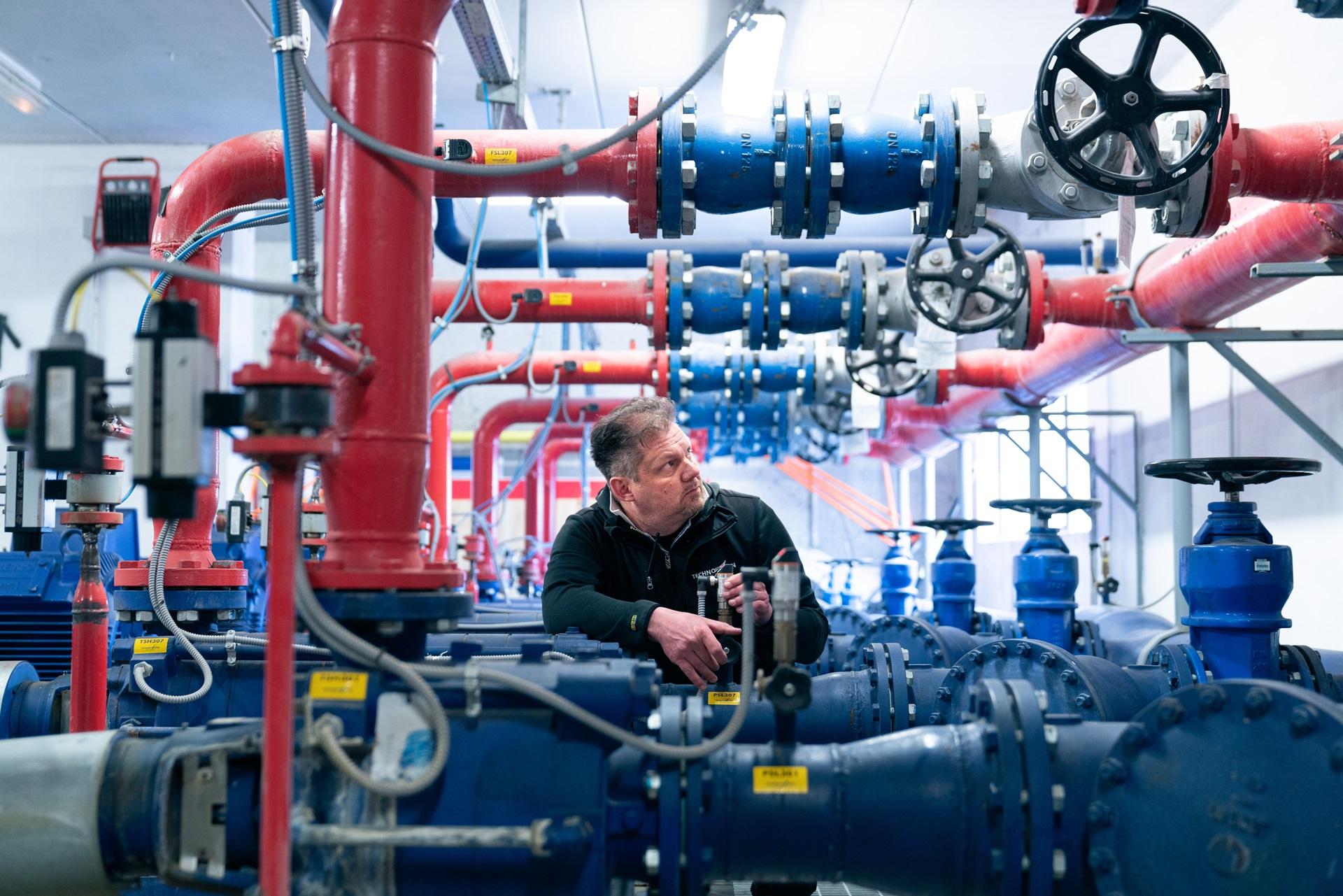Leo, the snowmaker
“Making artificial snow in itself is easy: you just need water, air, and cold. But making perfect artificial snow is, instead, an art.”
These words are from Leo, manager of the Paganella programmed snow system since 1992. Using computers, pumps, and compressors he and his team have the task of replicating the work of nature.
Starting from the end of October any day is potentially a good one and Leo monitors, analyses, and decides. “The most difficult thing is to identify the right moment to start making snow.” If the temperature rises after you have made some, you have just wasted resources. If you wait too long there is the risk that the runs might not be complete at the start of the season.

“Temperature alone is not the only critical factor in our work, but when it is considered as a ratio with relative humidity this gives the wet bulb temperature, which is the value we use to establish whether our snow cannons will give us snow or just cold water.”
Programmed snow making is a chemical and physical process: the two stages occur within a few fractions of a second. The pressurized water, after its temperature has been lowered in the cooling towers, is pumped out of the snow cannons and in ideal conditions it freezes in contact with the air. Water vapour freezes around this first ice crystal and it falls to the ground under the force of gravity.
On the Paganella, a cannon running all day can produce on average around 15 m3 of snow. For a ski run to be ready for opening day we need 30,000 m3. Once a pile of snow has been produced, it is the job of the snowcat drivers to prepare the ski run.

“Thanks to the presence of Lake Molveno we have not had to create any artificial reservoirs on the Paganella,” says Leo.
“The immersion pumps in the lake transport up to 300 litres a second and we transport the water up to a collection tank near Dosson, at 1,460 m. There is another tank on the Fai side, at La Rocca. From these the water is piped to the 120 snow cannons positioned along the ski runs.”
“The water consumption is relatively small”, explains Leo, referring to the drop in water level of Lake Molveno, which is at most ten centimetres for an entire winter season, “and the water that we use returns to the natural cycle when the snow melts again.”

Before opening the ski lifts, weather conditions permitting, the snow cannons are in operation 24 hours a day. Subsequently, in the absence of natural snowfall, Leo and his men have to work to top up the snow supply wherever it is needed: “Sunshine, angle of slope, and wind all greatly influence the persistence of the snow. Normally once the lifts are open, the cannons only operate at night. However, in seasons lacking snow we are sometimes forced to run them during the day as well.”

When the cannons are off Leo deals with on-piste safety: you might happen to see him, together with his team, setting up netting along the edges of the runs. After very heavy snowfalls he instead studies the snowpack to establish the avalanche risk.
“The most important thing for us is to guarantee the best possible experience for all the skiers on Paganella, whether this means snow cover or safety. If people are thrilled and satisfied at the end of the day when they take off their ski boots and load their skis back into their cars, that means we have done a good job.”

Most read
Pushchair hiking in Dolomiti Paganella
20
July 2024
Your guide to walking routes suitable for hiking pushchairs, immersed in the forests and natural wonders...
Cavedago and Spormaggiore: villages to visit on your holiday in Paganella
18
July 2024
Blog entry not available. Return to the homepage....
Dolomiti Paganella in a camper van: a practical guide for your journey
16
July 2024
In Dolomiti Paganella the freedom to roam and get close to nature are part of our DNA. However, when...
Hiking in Dolomiti Paganella
04
July 2024
Lace up your boots, make a final check on the weather forecast, and switch on GPS tracking. No particular...



